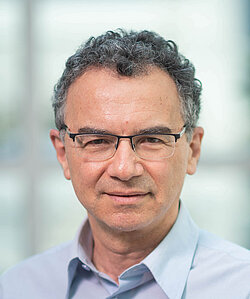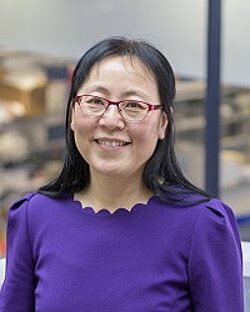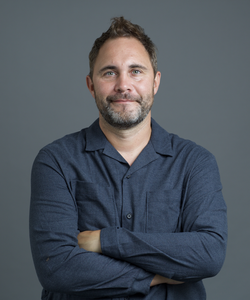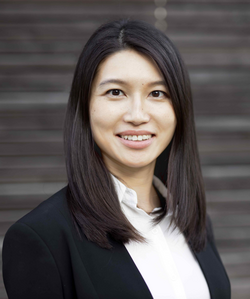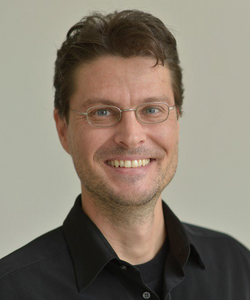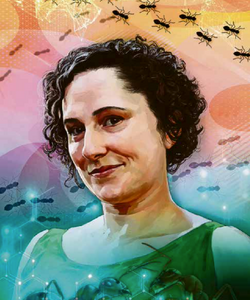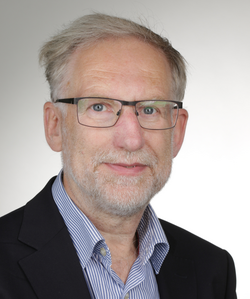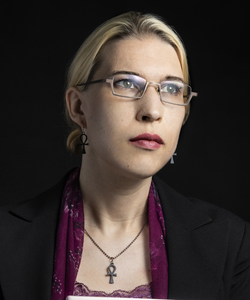Invited Speakers
Prof. Robert Nabi
Professor and Director of LSI Imaging Facility
University of British Columbia in Vancouver, Canada
Nanoscopy powered by machine learning: Novel insight into subcellular structure
Dr. Nabi is Professor and Director of Imaging in the Life Sciences Institute of the University of British Columbia in Vancouver, Canada with almost 30 years of cell biology experience in the field of cellular domains and their role in cancer progression and metastasis. As a graduate student, he identified the Gp78 receptor of autocrine motility factor and has gone on to define its dual roles as a cell surface receptor and endoplasmic reticulum (ER) associated E3 ubiquitin ligase, more recently defining its role as a regulator of ER-mitochondria contacts and showing that Gp78 basal mitophagy controls cancer cell ROS. His work has also focused on the characterization of cell surface domains, including lipid rafts, caveolae and non-caveolar caveolin-1 scaffolds and the galectin lattice and their regulation of focal adhesion dynamics and tension in cancer cell migration and metastasis. He will discuss his recent work that has focused on applying computational machine learning approaches to super-resolution microscopy, studying the nanodomain structure and dynamics of the ER, mitochondria-ER contact sites, and autophagosome maturation in cancer cells, use of single molecule localization microscopy to decipher the molecular structure of caveolae and scaffolds and, more recently, clathrin coated pits as well as recent imaging of cells infected with SARS-CoV-2 variants of concern.
Prof. Xin Lu
Director, Ludwig Institute for Cancer Research, Oxford Branch
Director, Oxford Centre for Early Cancer Detection
Nuffield Department of Clinical Medicine
University of Oxford, UK
Infection & Cancer, “Kick & Kill strategy” revisited
Over 2 million cancer cases are attributed to viruses, including EBV, HPV and HBV, and new ways to tackle these cancers would be highly beneficial. Many viruses are able to escape host immune responses by adopting a latent state, which enables them to achieve long-term infection. For example, the herpesvirus EBV infects more than 90% of the global population, but it exists in a latent state in most infected individuals and escapes immune surveillance. However, each year ~210,000 cancer cases are attributed to EBV: B-cell malignancies, nasopharyngeal cancer (NPC), gastric cancer (GC), and some rare T/NK cell lymphomas, leukaemias and leiomyosarcomas. The epithelial cancers NPC and GC are the major group of EBV-associated malignancies with high mortalities, and EBV+GC is the largest category of EBV-cancer with >80,000 cases per year. Harnessing host immunity to selectively eliminate tumour virus infected cancers could benefit millions of patients. One of the main research focus of my group is molecular switches of cell plasticity – the ability of cells to change their characteristics and fate. Cell plasticity is a key feature of development, regeneration and cancer and we recently revisited the role of cancer-causing pathogens, such as H. pylori and Epstein Barr virus on their ability to control cell plasticity of host cells and vise versa. I will discuss our recent advancement in achieving an effective ‘kick and kill’ strategy to purge EBV-infected epithelial cancer cells through a combination of high throughput drug screening and state of the art single cell sequencing technologies.
Prof. Benjamin tenOever
Fishberg Professor of Medicine
Icahn Scholar and Professor of Microbiology
Director, Virus Engineering Center for Therapeutics and Research (VECToR)
Icahn School of Medicine at Mount Sinai, USA
A molecular basis for long COVID
SARS-CoV-2, the virus responsible for the COVID-19 pandemic, has been associated with significant global morbidity and mortality. In addition to causing acute respiratory distress, SARS-CoV-2 has been found capable of inducing long term impacts commonly referred to as post-acute sequalae of SARS-CoV-2 (PASC) or long COVID. To define the molecular basis of this prolonged condition, we compared the systemic response to influenza A virus and SARS-CoV-2 in the golden hamster model at times during active infection and post viral clearance. These data demonstrated that while both RNA viruses induced systemic inflammation lasting weeks post challenge, SARS-CoV-2 uniquely impacted the olfaction system, resulting in lasting transcriptional changes that extended into other areas of the brain and correlated with behavioral phenotypes. These findings could be further corroborated through sequencing of individuals who recovered from COVID-19, as sustained inflammation in olfactory tissue remained evident months beyond disease resolution. These data highlight a molecular mechanism for persistent COVID-19 symptomology and characterize a small animal model to develop future therapeutics.
Prof. Fan Liu
Group Leader and Head of Proteomics Research Platform at Leibniz-Forschungsinstitut for Molecular Pharmacology (FMP)
Professor for Structural Interactomics at Charité in Berlin, Germany
Developing structural interactomics and its application in cell biology
Proteins are involved in almost all cellular processes. They are organized through extensive networks of interactions, regulating the working mechanisms of the cell with high fidelity and precision. However, characterization of the protein interactome has been an extremely challenging task due to the lack of highly confident and efficient technology. To address this issue, we describe a leap forward in cross-linking mass spectrometry demonstrating a new integrated workflow that robustly identifies thousands of protein-protein interactions (tens of thousands of cross-links) from (sub)proteome samples. We applied this novel XL-MS strategy to several highly complex samples, including the intact virion, the mitochondrion and the neuronal synapse. The XL-MS-based method not only reveals protein partnerships systematically but also provides critical insights into the architecture and spatial organization of the complex proteome in various biological systems.
Prof. Robin Hiesinger
Professor and Head of Neurobiology Division
Institute for Biology, Free University Berlin, Germany
How does a neuron decide when and where to make a synapse?
Precise synaptic connectivity is a prerequisite for the function of neural circuits, yet individual neurons, taken out of their developmental context, readily form unspecific synapses. How does genetically encoded brain wiring deal with this apparent contradiction? Brain wiring is a developmental growth process that is not only characterized by precision, but also flexibility and robustness. As in any other growth process, cellular interactions are restricted in space and time. Correspondingly, molecular and cellular interactions are restricted to those that 'get to see' each other during development. This seminar will explore the question how neurons decide when and where to make synapses using the Drosophila visual system as a model. New findings reveal that pattern formation during growth and the kinetics of live neuronal interactions restrict synapse formation and partner choice for neurons that are not otherwise prevented from making incorrect synapses in this system. For example, cell biological mechanisms like autophagy as well as developmental temperature restrict inappropriate partner choice through a process of kinetic exclusion that critically contributes to wiring specificity. The seminar will explore these and other neuronal strategies when and where to make synapses during developmental growth that contribute to precise, flexible and robust outcomes in brain wiring.
Prof. Adria LeBoeuf
Assistant Professor, Lab of Social Fluids
Department of Biology, University of Fribourg, Switzerland
Globalization for ants: how a social transfer rewires colony life
Many successes in life are based on collaboration. Microorganisms exchange nutrients through cross-feeding, and multicellular organisms are made up of tissues with different metabolic roles and needs. Social insects take this collaboration still further: Many ant colonies engage in social exchanges of experimentally accessible fluids that contain both exogenously sourced and endogenously produced materials in a behavior called trophallaxis. Some species engage in this behavior infrequently and only in the presence of certain cues, while others perform trophallaxis so frequently that this network of fluid exchange creates a social circulatory system that mediates a form of shared metabolism. Storage proteins, ancestrally accumulated during larval development and repurposed during metamorphosis, are important components frequently passed over the trophallactic network. This globalization of processed goods across the colony has far-reaching implications for aging, ecology, worker miniaturization, and the fixing of division of labor. This talk will outline what we have learned about the evolution of this social transfer and how it has transformed some of the ant lineages that use it.
Prof. Hinrich Abken
Leibniz Institute for Immunotherapy, Div. Genetic Immunotherapy
Chair Gene-Immunotherapy, University Regensburg, Germany
Of CARs and TRUCKs and beyond: redirected T cells for the adoptive immunotherapy
Adoptive therapy with chimeric antigen receptor (CAR) modified T cells achieved spectacular remissions of so far refractory leukemia/lymphoma, mostly in the treatment of B cell malignancies, resulting in lasting remissions. Here we will provide a brief overview on the evolution of the various generations of CARs from the beginning until today’s four generations of CARs. We will give a snapshot on the individual CAR domains, their impact on redirecting T cell function, and novel CAR architecture to modulate T cell function. Despite success in hematologic malignancies, the treatment of solid cancer remains challenging. There are several developments in this respect including CAR T cells engineered to act as “living factories” to produce and deposit immune modulating cytokines in the targeted tumor tissue aiming at converting the immune cell environment into a more favorite one. Such TRUCKs (T cells redirected for unrestricted cytokine release and killing) open a new field of adoptive cell therapy. In recent developments of our group, the efficacy of CAR redirected T cell activation is improved by blocking T cell CD30. Moreover, a cytokine signal is provided in addition to the 2nd generation CAR by cytokine co-expression or integration into the extracellular CAR stem. This novel CAR design showed superior in prolonged T cell activation and modulation of functional capacities.
Dr. Sofia Forslund
Group Leader Host-microbiome factors in cardiovascular disease
Max Delbrück Center (MDC), Berlin, Germany
Telling disease from treatment signatures in host-microbiome cohort studies
Non-communicable diseases reflect complex multifactorial risk scopes, with individual outcomes highly variable and reflecting both external environment, intrinsic factors and the internal environment which is the gut. With individual life courses embedded within healthcare systems, treatment is initiated and adjusted over time, meaning any -omics readout comparing the sick and the healthy will reveal pathomechanisms alongside treatment effects and upstream susceptibility factors. By examples from recent studies into cardiovascular and metabolic diseases, I outline some approaches for attempting to tell these classes of biomarkers apart.

